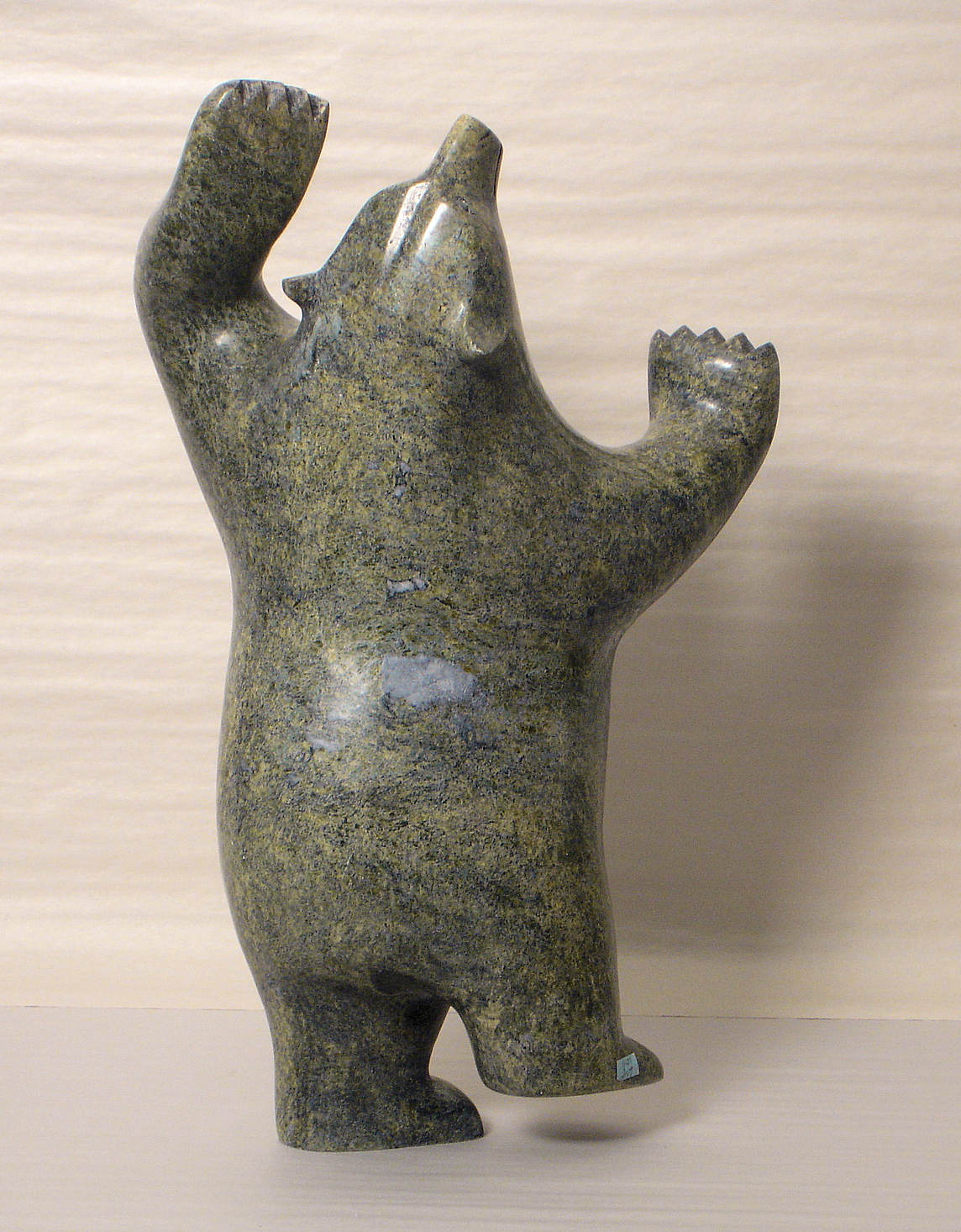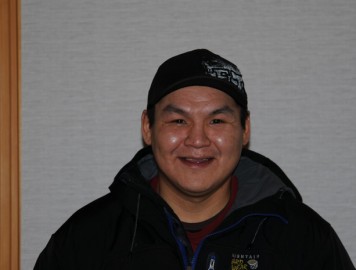
Ahevak Adla-Dancing Polar Bear
|
| Ashevak Adla |
Home › Inuit Art: The Many Forms of Inuit Art
The uniqueness of Inuit Art showcases to the world that the Inuit are devoted to sharing the love of the culture and the land that provides their physical and spiritual necessities.
Inuit Art styles differ from community to community.
The most sought after Inuit art is stone sculpture. Inuit works of art also include, lithographic prints, and dolls, tapestries, embroidery and beading, drawings and paintings. As from different types of stone, sculpture is carved out of antlers, also bone, and ivory. Throughout the past fifty-years printmaking has spread from Cape Dorset to other Baffin Island communities such as Holeman. Beadwork is popular and takes many hours to create a finished piece. Dolls are made from pieces of fur.
Other forms of Inuit art, other than stone sculpture, are stone-cut limited edition prints (50 copies per image, then the stone is destroyed), dolls, tapestries, embroidery and beading, drawings and paintings.
In the early nineteen fifties, James Houston, author, travelled to Baffin Island to acquire works of Inuit soapstone carvings. While in Cape Dorset, he taught stone-cut lithography to the natives. The images include animals, family, and mythological depictions. He helped establish native-owned-operatives which were later organized in the other Arctic communities, launching the growth of the Inuit art market, internationally.
Since the 1950s, when Inuit sculptural styles evolved, Inuit carvers in Cape Dorset adopted a more polished style than Artists in the more distant communities. Other sculptors, such as George Arlook, have developed a style that is highly abstract. All styles reflect the flora and fauna, games, traditional activities, and sea creatures essential to Inuit life and survival. Even today, the Inuit, especially the older carvers, create their works using hand tools such as rasps and axes. Modern power tools are used, but most sculptors prefer the old ways, giving them more physical and spiritual connection with the stone they consider to be living.
The most common material is now steatite, serpentine, or soapstone found within seventy kilometers of Cape Dorset, ranging in color from black to dark brown to dark green, resembling jade, to light mottled green in color, or orange-red pipestone. The finishing touch of a stone sculpture is polishing, which is done with varying grades of sandpaper, under water.
The grounding quality of Inuit art showcases to the world that Inuit are devoted to sharing their love of their culture and the land that has provided for their physical and spiritual needs. Inuit craft also offers dolls, tapestries, embroidery, drawings and paintings.
By John duVal. View and acquire original Inuit art at: http://inuitart-source.com, Everything you always wanted to know about original Inuit art including life on the tundra and how it influences the art of the inuit artists, their tools, food, spirituality, sculpting techniques, the development and importance of local co operatives and their importance in marketing the art, prints, sculptures and crafts world wide.
